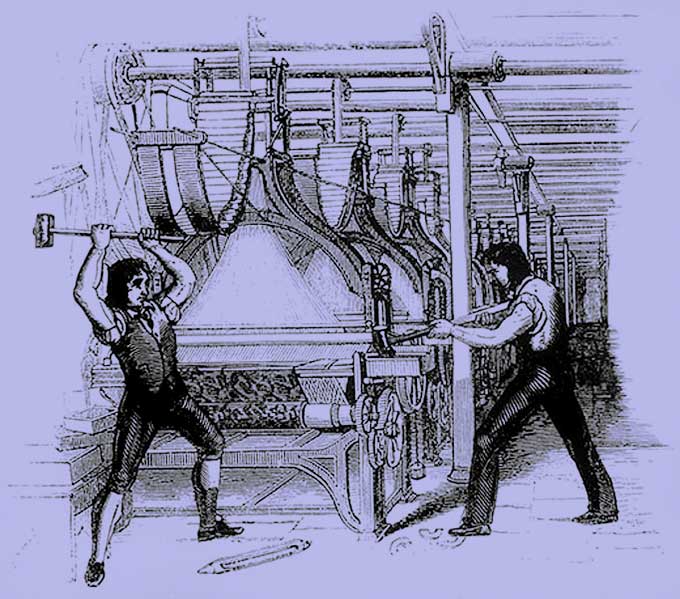An Interest In:
Web News this Week
- April 4, 2024
- April 3, 2024
- April 2, 2024
- April 1, 2024
- March 31, 2024
- March 30, 2024
- March 29, 2024
What a 19th-century rebellion against automation can teach us about the coming war in the job market

Our friend and frequent Boing Boing contributor Clive Thompson has a piece in the January/February issue of Smithsonian magazine entitled "Rage Against the Machines." He explores the 19th century Luddite Revolution, the first rebellion against automation, comparing it to the upcoming robot workforce revolution.
I didn't know that pre-industrial textile workers were well-paid and had lots of free time. No wonder they fought so hard against textile automation!
At the turn of 1800, the textile industry in the United Kingdom was an economic juggernaut that employed the vast majority of workers in the North. Working from home, weavers produced stockings using frames, while cotton-spinners created yarn. Croppers would take large sheets of woven wool fabric and trim the rough surface off, making it smooth to the touch.
These workers had great control over when and how they workedand plenty of leisure. The year was chequered with holidays, wakes, and fairs; it was not one dull round of labor, as the stocking-maker William Gardiner noted gaily at the time. Indeed, some seldom worked more than three days a week. Not only was the weekend a holiday, but they took Monday off too, celebrating it as a drunken St. Monday.
Croppers in particular were a force to be reckoned with. They were well-offtheir pay was three times that of stocking-makersand their work required them to pass heavy cropping tools across the wool, making them muscular, brawny men who were fiercely independent. In the textile world, the croppers were, as one observer noted at the time, notoriously the least manageable of any persons employed.
But in the first decade of the 1800s, the textile economy went into a tailspin. A decade of war with Napoleon had halted trade and driven up the cost of food and everyday goods. Fashions changed, too: Men began wearing trowsers, so the demand for stockings plummeted. The merchant classthe overlords who paid hosiers and croppers and weavers for the workbegan looking for ways to shrink their costs.
That meant reducing wagesand bringing in more technology to improve efficiency. A new form of shearer and gig mill let one person crop wool much more quickly. An innovative, wide stocking frame allowed weavers to produce stockings six times faster than before: Instead of weaving the entire stocking around, theyd produce a big sheet of hosiery and cut it up into several stockings. Cut-ups were shoddy and fell apart quickly, and could be made by untrained workers who hadnt done apprenticeships, but the merchants didnt care. They also began to build huge factories where coal-burning engines would propel dozens of automated cotton-weaving machines.
They were obsessed with keeping their factories going, so they were introducing machines wherever they might help, says Jenny Uglow, a historian and author ofIn These Times: Living in Britain Through Napoleons Wars, 1793-1815.
The workers were livid. Factory work was miserable, with brutal 14-hour days that left workersas one doctor notedstunted, enfeebled, and depraved. Stocking-weavers were particularly incensed at the move toward cut-ups. It produced stockings of such low quality that they were pregnant with the seeds of its own destruction, as one hosier put it: Pretty soon people wouldnt buy any stockings if they were this shoddy. Poverty rose as wages plummeted.
The workers tried bargaining. They werent opposed to machinery, they said, if the profits from increased productivity were shared. The croppers suggested taxing cloth to make a fund for those unemployed by machines. Others argued that industrialists should introduce machinery more gradually, to allow workers more time to adapt to new trades.
The plight of the unemployed workers even attracted the attention of Charlotte Bront, who wrote them into her novelShirley. The throes of a sort of moral earthquake, she noted, were felt heaving under the hills of the northern counties.
Original Link: http://feeds.boingboing.net/~r/boingboing/iBag/~3/-j5XVFbKf1g/what-a-19th-century-rebellion.html


